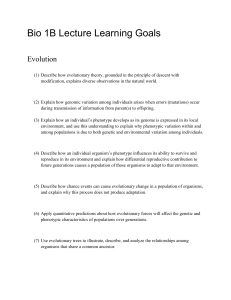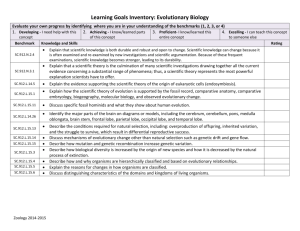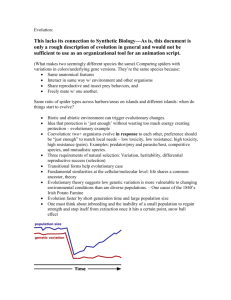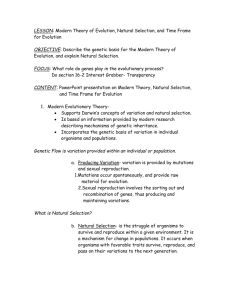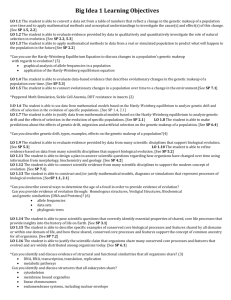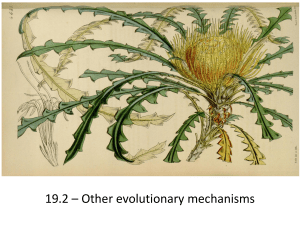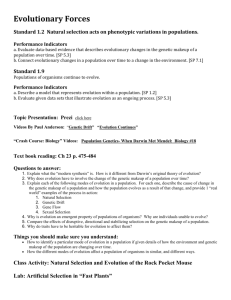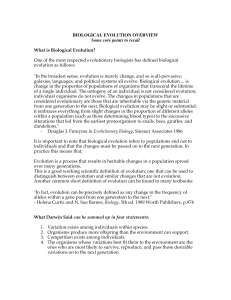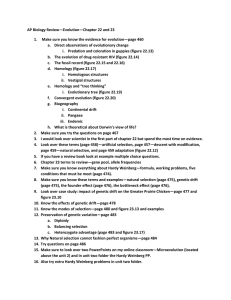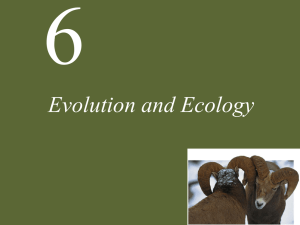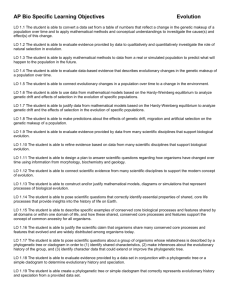Evolution Learning Goals - Mayfield City School District
advertisement
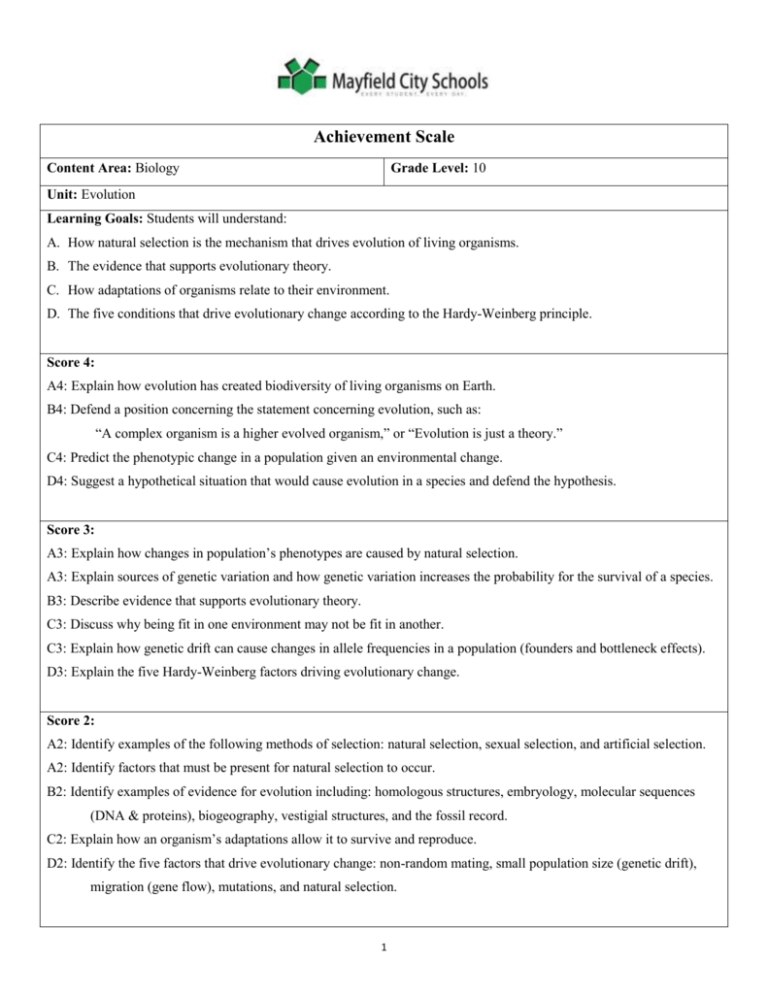
Achievement Scale Content Area: Biology Grade Level: 10 Unit: Evolution Learning Goals: Students will understand: A. How natural selection is the mechanism that drives evolution of living organisms. B. The evidence that supports evolutionary theory. C. How adaptations of organisms relate to their environment. D. The five conditions that drive evolutionary change according to the Hardy-Weinberg principle. Score 4: A4: Explain how evolution has created biodiversity of living organisms on Earth. B4: Defend a position concerning the statement concerning evolution, such as: “A complex organism is a higher evolved organism,” or “Evolution is just a theory.” C4: Predict the phenotypic change in a population given an environmental change. D4: Suggest a hypothetical situation that would cause evolution in a species and defend the hypothesis. Score 3: A3: Explain how changes in population’s phenotypes are caused by natural selection. A3: Explain sources of genetic variation and how genetic variation increases the probability for the survival of a species. B3: Describe evidence that supports evolutionary theory. C3: Discuss why being fit in one environment may not be fit in another. C3: Explain how genetic drift can cause changes in allele frequencies in a population (founders and bottleneck effects). D3: Explain the five Hardy-Weinberg factors driving evolutionary change. Score 2: A2: Identify examples of the following methods of selection: natural selection, sexual selection, and artificial selection. A2: Identify factors that must be present for natural selection to occur. B2: Identify examples of evidence for evolution including: homologous structures, embryology, molecular sequences (DNA & proteins), biogeography, vestigial structures, and the fossil record. C2: Explain how an organism’s adaptations allow it to survive and reproduce. D2: Identify the five factors that drive evolutionary change: non-random mating, small population size (genetic drift), migration (gene flow), mutations, and natural selection. 1 Score 1: With help (being given word banks, manipulated equations, retakes), the student demonstrates a partial understanding of the simpler details and processes that support the learning goal(s). Score 0: Even with help, no success Score 4 Example Assessment Items: Academic Vocabulary: How would classifying a new found species 150 years ago Evolution be different from today? Natural selection Artificial selection Sexual Selection Gene pool Score 3 Example Assessment Items: Genetic Drift The theory of evolution predicts that Founder effect A. closely related species will show similarities in DNA nucleotide sequences. Bottleneck effect B. if species have changed over time, their genes should have changed. Gene Flow (immigration, emigration) C. closely related species will show similarities in amino acid sequences Speciation D. all of the above Fitness Score 2 Example Assessment Items: Adaptation Natural selection is the process by which: Trait A. the age of selected fossils is calculated B. organisms with traits well-suited to their environment survive and Biogeography reproduce at a greater rate than less well-adapted organisms in the same Speciation environment. Disruptive Selection C. acquired traits are passed on from one generation to the next. Directional Selection D. All of the above Stabilizing Selection Fossils Homologous structure Vestigial structure Species Genetic (phenotypic) variation Molecular clock Gradualism Punctuated equilibrium Convergent Evolution Coevolution Adaptive Radiation District Mission: District Vision: Every student. Every day. A promise of learning, dignity, and respect for all. 2
